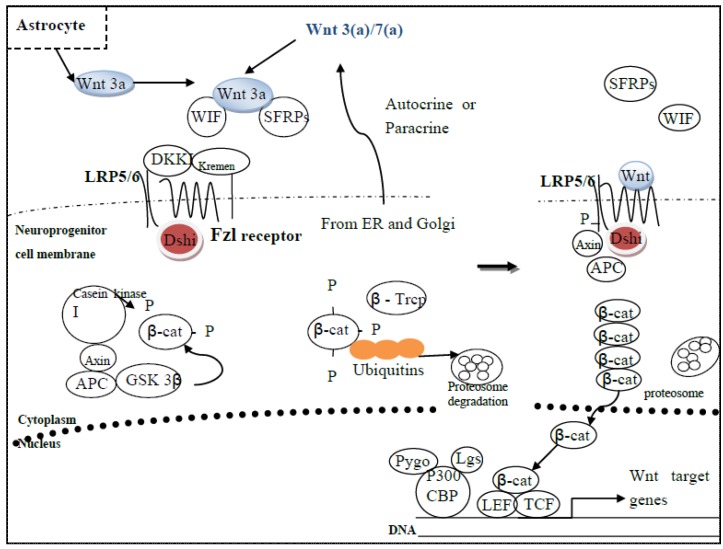Figure 2.
(Left) Wnt signaling is turned off when the ligand, although secreted by nearby astrocytes or neuroprogenitor cells, is bound by various Wnt inhibitors, such as Wnt inhibitory factor (WIF) and secreted fzl-related proteins (SFRPs). The fzl receptor remains bound by disheveled (dsh1) and LRP5/6 is bound by Dickopf (DKK1)-kremen complex, which helps anchor the complex into the membrane. With adenomatous polyposis (APC) and axin bound to casein kinase 1 and GSK-3β, these two kinases can now phosphorylate β-catenin, which is then sequestered by ubiquitins with the help of β-Trcp. β-Catenin is then degraded in the proteosome. (Right) Wnt signaling is turned on when Wnt binds fzl and the LRP5/6 co-receptor, promoting axin to dissociate from APC and dsh1 to phosphorylate LRP5/6. Meanwhile, casein kinase 1 phosphorylates GSK-3β, thereby inactivating it. β-Catenin then accumulates in the cytoplasm, enters the nucleus, where it binds to TCF/LEF and co-activators, such as pygopus (Pygo), legless (lgs), and P300/CBP, leading to the transcription of Wnt target genes.

